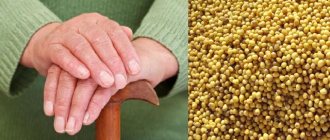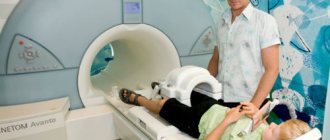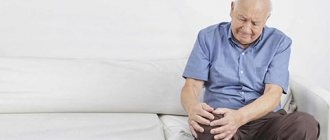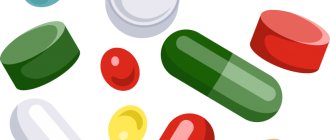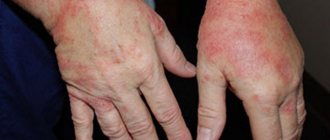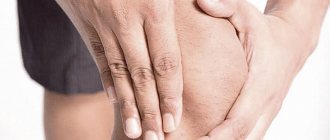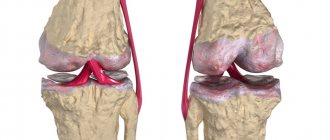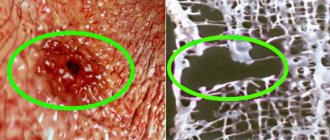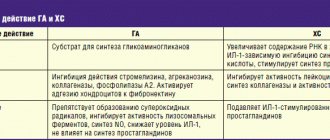Arthritis is an insidious disease that slowly but surely leads a person to disability.
This is the name for a whole bunch of diseases united by one common symptom - inflammatory damage to the joints.
It can exist as an independent disorder, for example, spondylitis, or be a manifestation of another disease - systemic lupus erythematosus, psoriasis.
It can affect one or more joints, be acute or chronic and have many causes.
Arthrosis will be called a dystrophic change in a joint of a non-inflammatory nature. Most often it occurs as a result of injury and with age, usually after 45-50 years.
What causes joint pain?
This disease can be caused by:
- injury or infection, such as tuberculosis and brucellosis
- it may be caused by metabolic disorders (gout)
- immunogenetic factors that trigger an autoimmune reaction (rheumatoid arthritis, systemic autoimmune diseases)
- an allergic mood of the body can cause inflammation of the joints
- arthritis often manifests itself as a complication from vaccination, and this should be remembered
- advanced age, characterized by general wear and tear of the joints, inevitably leads to inflammation in them
So, arthritis is inflammation of the joints, arthrosis is destruction.
Special offers and discounts
PRESENT!
homeopathic cream “Virgin Beauty” for wrinkles!
Great results!
Valid until 11.10!
SPECIAL OFFER!
We give 1000 rubles. You and 500 rub. Your relative, if he contacts us for the first time! promo code: "GOMEOMED"
Valid until 11.10!
AS A GIFT 1280 RUR!
Bioresonance therapy as a gift for the second appointment with Voll or ART diagnostics!
Valid until 11.10!
Call and ask questions to our consultants
daily from 9.00 to 21.00
+7 +7
Symptoms of arthritis and arthrosis
Arthritis has characteristic symptoms:
- pain, redness of the skin
- the joint loses its mobility, its shape changes
- When under load, joints may crack unnaturally
The disease can be diagnosed using radiography, tomography, and arthroscopy.
Tests are also used: complete blood count, C-reactive protein, fibrinogen level. If there is reason to assume the autoimmune nature of the disease, then a blood test is done for rheumatoid factor and antibodies to cyclic citrulline-containing peptide. In some cases, studies of synovial fluid, determination of the level of uric acid or antibodies to hemolytic streptococcus type A are prescribed.
Treatment of arthritis with classical medicine
Standard treatment method of classical medicine
Treatment of arthritis in traditional medicine begins with the prescription of strong non-steroidal anti-inflammatory drugs, including acetylsalicylic acid, indomethacin, voltaren, brufen and others. This method of treatment has many contraindications; many patients eventually begin to complain of allergies and other negative effects. In addition, it is possible to be treated in this way for several years and even decades. The reason for this is that this method is not very efficient.
Treatment of arthritis with hormonal drugs
So, as mentioned above, anti-inflammatory drugs cannot bring the desired effect, and in addition, they are harmful. Therefore, over time, patients are prescribed hormonal medications, such as hydrocortisone, Kenalog and others. Unfortunately, various complications often arise with this treatment method.
Treatment of arthritis with drugs containing gold
There is another method of treating arthritis in traditional medicine. This is the prescription of so-called basic drugs containing gold. This is, for example, krizanol. However, this method has been repeatedly disputed and is considered insufficiently effective.
Arthritis and other joint diseases are almost impossible to cure using classical medicine. Therefore, an increasing number of people with such diseases are turning to homeopathic medicines.
Traditional treatment methods
Since there are many reasons for the development of arthritis, for successful treatment it is important to find out what exactly caused this disorder. Therefore, the examination must be comprehensive.
But even having established the cause, official medicine directs its efforts to combating the consequence, that is, the observable symptoms of the disease.
Pain syndrome is relieved through the use of non-steroidal anti-inflammatory drugs. Their use does not affect the development of the process in any way, it only temporarily numbs the pain. Taking them lasts for years, which causes serious disturbances, for example, in the functioning of the stomach.
In case of severe inflammation, injections with corticosteroid hormones are used locally. These substances have a strong suppressive effect and grossly interfere with the functioning of the body.
Previously, gold preparations, for example, Aurotioprol, were actively used. But their effectiveness has not been proven. Chondroprotectors are used to restore cartilage tissue. If the disease is infectious in nature, antibiotics are used.
Physiotherapy is also actively used. Ultraviolet irradiation, electrophoresis with painkillers, phonophoresis, massage, mud therapy and other physiotherapy procedures are designed to alleviate the suffering of the patient.
Thus, medicine erases the symptoms, returning the person to their usual lifestyle for a while, but does not eliminate the cause, and arthritis develops further.
Are there techniques that can stop the destruction of joints? Is it possible to reverse this process?
What is homeopathy
Homeopathy is a special system of alternative treatment that acts as an alternative to classical drug methods. Unlike pharmacological therapy, aimed at relieving and masking leading symptoms, homeopathy acts specifically on self-regulation processes, providing information to the central nervous system about healing paths.
The main principle of the method is “treat like with like.” Practicing homeopaths believe that only those factors that provoke it can save a person from a disease.
During therapy, specialists select the so-called “key” to the disease - an individual medicine that allows you to heal. The provoking factor is used in minimal doses, which are calculated for each individual patient. Its action is aimed at mobilizing internal forces to fight illness and create a “program” of healing.
Substances of mineral, plant and animal origin that have natural energy are used as raw materials for homeopathic medicines. Homeopaths are guided by the principle of monotherapy - they use only one medicine. It is believed that when combined, drugs may come into confrontation and not bring the desired benefit.
Before prescribing the drug, the doctor conducts a thorough medical history, studies the constitutional data, heredity and complaints of the patient at the time of the examination.
Prevention of arthritis
You should know that there is prevention of this insidious disease. Factors contributing to the development of arthritis include excess weight and poor diet. This means that a rational and balanced diet will help you avoid or significantly delay the development of changes in the joints.
- Enrich your diet with polyunsaturated fatty acids (fatty fish, fish oil), omega-3-unsaturated fatty acids (reduce pain), calcium and magnesium.
- Injuries and excessive physical activity also contribute to the development of inflammatory processes in the joints. But moderate physical activity, such as fitness or exercise therapy, improves blood supply and joint mobility, strengthens muscles and ligaments. Gymnastics as a way of life will become a reliable protector against problems with the musculoskeletal system.
Homeopathy to the rescue
Homeopathy can provide significant assistance in counteracting arthritis. The essence of homeopathic treatment of joints is to return the body to the lost balance of health: restore metabolic processes, improve the functioning of the immune system. That is, homeopathy seeks to eradicate the very cause of the disease. It is important that such treatment has no side effects and is not addictive; this is of particular importance when working with protracted chronic diseases.
According to homeopathic doctors, primary, non-systemic disorders are most successfully treated. But the latter can also be corrected with the help of homeopathic remedies.
You just need to understand that systemic and autoimmune disorders are of a very deep nature, which means the path to health will be long and difficult. For example, in the case of homeopathic treatment of arthrosis, the doctor will necessarily take into account the patient’s constitution, his psycho-emotional characteristics, general and physical symptoms and their modalities. Therefore, each patient will have his own, individual medicine.
In the video lectures of the course “For Every Mother” you will learn about the possibilities of homeopathy in treating a wide variety of diseases that a person faces every day.
Homeopathy has a whole arsenal of remedies that are particularly sensitive to joints. Polycrests are often used to treat acute inflammation.
Here are a few examples of homeopathic medicines that homeopathic doctors use to treat joints. Now it will be easier for you to describe your condition, knowing which symptoms are important.
06/24/2016 Rheumatoid arthritis is an autoimmune disease with a completely unclear etiology with a characteristic symmetrical erosive lesion of the joints with the addition of a wide range of extra-articular symptoms.
Possible factors in the development of rheumatoid arthritis include the triggering role of certain viruses and genetic predisposition. Under the influence of an unknown etiological factor, almost all components of the immune system are eventually involved in the pathological process. And as a result of immune disorders that have arisen, cells produce altered IgG, which is perceived as a foreign agent, and the body produces antibodies to it - rheumatoid factors. It is the immune complexes formed as a result of the connection of antibodies with antigen that accumulate in tissues, damaging them.
Thus, rheumatoid arthritis is based on profound disorders of the immune system, with a violation of the qualitative and quantitative composition of the cells produced, as well as a violation of their functional activity.
Clinically, the disease begins with articular syndrome. Typically, patients complain of pain in the small joints of the hands and feet, most intense in the morning and decreasing in the evening. Over time, the joint syndrome increases, the pain intensifies, and an increasing number of joints are involved in the process. Typical for rheumatoid arthritis is symmetrical joint damage. At the beginning of the disease, pain that occurs only during movement, as the disease progresses, it begins to bother you at rest. Other signs of inflammation also develop, such as swelling and redness of the skin around the affected joints.
One of the most important symptoms is morning stiffness, characterized by difficulty in the first movements in the joint after a period of rest, with limited movement in the joint. The increasing inflammatory process leads to a significant limitation of mobility, as well as the development of ankylosis, deviations, and deformities in the joints.
In the advanced stage of the disease, its systemic nature begins to manifest itself; almost all organs and systems of the body are involved in the disease. Already in the first stages, there is a gradual decrease in body weight, as well as a high temperature. On the skin side, RA is characterized by the appearance of rheumatic nodules - painless round formations with a diameter of up to 3 cm; rheumatic vasculitis is often found in the form of multiple skin changes.
As the disease progresses, damage to the lungs, kidneys, cardiovascular system, anemia, an increase in the size of the spleen, damage to the eyes and nervous system are added.
Diagnosis of RA
The diagnosis of rheumatoid arthritis is made on the basis of diagnostic criteria developed by the American College of Rheumatology (ACR) with experts from the European League Against Rheumatism (EULAR).
The criteria are presented in the table below; rheumatoid arthritis is diagnosed if the patient scores a total of more than 6 points.
Arthritis treatment
A benign course of arthritis occurs in less than 10% of patients; in the rest, the disease is characterized by slow or rapid progression with steady growth of the affected joints. Therefore, in traditional medicine, the goal of RA therapy is to achieve short- or long-term remission, or at least reduce disease activity.
Drug therapy is reduced to a combination of NSAIDs and basic antirheumatic drugs that slow the progression of the disease.
Briefly, the stages of pharmacological treatment are presented in the picture below.
It should be noted that most complications of RA are associated precisely with the pathogenetic therapy of the disease. Thus, widely prescribed cytostatic and glucocorticoid drugs significantly contribute to the development of osteoporosis. A side effect of NSAID therapy is often stomach ulcers. Basic therapy has a whole bunch of side effects that significantly affect the quality and life expectancy of patients.
Unlike pharmacological therapy, treatment with the homeopathic method is not aimed at masking symptoms, but at restoring the disturbed balance by regulating the central control processes in the body. The goal of homeopathy is to influence the processes of self-regulation with the help of individually selected medications, taking into account the patient’s reaction. Simply put, a homeopathic medicine activates self-healing mechanisms through short-term stimulation, as if giving the body information about healing paths. The medicine is selected strictly individually, taking into account not only specific symptoms, but also, above all, the individual characteristics of the course of rheumatoid arthritis.
Among the common constitutional remedies in patients with RA are potassium salts: Kalium phosphoricum Kalium carbonicum Kalium sulfuricum Kalium iodatum, as well as Causticum, Lycopodium, Sulfur.
In cases where the condition improves under the influence of heat and movement, Kalium phosphoricum and Kalium carbonicum should be considered.
Kalium phosphoricum: very chilly patients. Pain in the joints, pulling, almost tearing, with a simultaneous feeling of weakness/lethargy in the arms and legs. Stinging pain in soles. Rheumatic stiffness after rest. Pain relieved by warmth and slow movement.
Kalium carbonicum:
This remedy is characterized by stitching pain, especially if the pain is localized in the wrist joint, back, lumbar region or pelvic joints. A pathognomonic symptom is muscle weakness, so strong that it is difficult for the patient to cope with even a slight load. The pain clearly decreases with heat and, on the contrary, intensifies with cold, at night from 3 to 5 o’clock and in a position on the left side.
Kalium sulfuricum, Kalium iodatum, should be considered when improved by cold.
Rheumatic pains in patients with Kalium sulfuricum, worse in a warm room, relieved by walking in the open air. Worse in a sitting position and generally at rest, better with any even slight movement.
Kalium iodatum, drawing, tearing pains, as well as Kalium sulfuricum, intensify in warmth and at rest. The pain greatly disturbs the patient at night, improvement occurs with movement and cold
If symptoms improve in damp weather, Causticum should be considered.
Rending, tearing, paralytic pain, so strong that, according to the patient, “it’s like your soul is being taken out.” In addition to joints, tendons and ligaments are affected. Shortening of tendons leading to temporary or permanent contracture. Increasing stiffness of the joints, the patient has to work the joints often and for a long time. As the disease progresses, the patient becomes weaker and falls into a state of hopelessness and fear. The condition worsens from cold and heat, the pain decreases from heat, and intensifies in dry weather.
On the contrary, improvements in dry weather are found in the drugs Lycopodium and Sulfur
Lycopodium pain: tearing, burning, it is noteworthy that the worsening is observed at 16-18 hours. The pain decreases in warmth and with movement, and on the contrary increases in wet weather, as well as at rest. The pain begins on the right side, gradually moving to the left. Rheumatoid nodules in the joint area, difference in temperature of the legs.
The pain of Sulfur extends from top to bottom. Characterized by burning pain in the ankle joint and small joints of the feet with a feeling of heat, especially at night, the patient is forced to stick his legs out. At the beginning of the movement, the patient is stiff and bent; after some time of continuous movements, the stiffness decreases, allowing the patient to straighten, but on the other hand, with prolonged stress, the pain intensifies. General improvement in dry, mild weather.
For patients with rheumatic diseases, a rather paradoxical symptom will be relief of pain when exposed to cold, and in this case you should pay attention to the following drugs:
Apis This drug is characterized by severe, acute inflammation in the joint with large swelling and effusion into the cavity. The pain is stabbing with a burning sensation, and the joint is sharply painful on palpation. The pain intensifies in warmth and with movement, and decreases under the influence of cold procedures.
Ledum palustrae.
In cases where the inflammation begins in the joints of the feet and then goes up, and rheumatoid arthritis occurs with swelling of the joints, but the skin on them is pale and hot, Ledum palustrae should be considered. It is noteworthy that patients do not tolerate heat well, but are chilly. Joint pain is relieved by cold procedures.
It is not uncommon in practice to encounter patients with a clear dependence on the weather.
Rheumatic complaints of Dulcamara occur immediately after getting wet, hypothermia, and also in damp weather. There are lumbago and muscle twitching, severe pain, and a feeling as if the joint is broken. Pain is relieved by movement, massaging and warmth.
“Rheumatism is a barometer,” this is how the drug Rhododendron can be described. The patient complains of pain that occurs or intensifies on the eve of weather changes. The pain is especially pronounced in the forearm and hand. The condition worsens at rest, at night, in the morning; improves with movement and warmth.
A separate important issue is the transition from pharmacological to homeopathic therapy. Some consider it advisable to radically abolish pharmacological drugs during homeopathy treatment, in our homeopathic center, first of all
The question is being considered in which case the patient’s condition will improve: if it is abruptly canceled, or if pharmacological treatment is gradually replaced with homeopathic treatment.
As can be seen from what was previously described, over more than two hundred years of history, homeopathy has accumulated vast experience in the treatment of diseases, including the treatment of rheumatoid arthritis. The homeopathic doctor’s arsenal contains more than five thousand drugs for the most individualized treatment of the disease. The main drugs that a homeopathic physician pays attention to when treating a patient with rheumatoid arthritis were reviewed.
Homeopathy treatment for rheumatoid arthritis is most promising if started as early as possible. The absence of side effects and complications of homeopathic therapy, as well as high efficiency, make it more attractive compared to pharmacological therapy.
In our center you will receive high-quality and complete treatment for rheumatoid arthritis; at the appointment, the homeopathic doctor carefully collects symptoms, analyzes the case of the disease, carries out repertorization (selection of a homeopathic medicine), and, if necessary, talks in detail about the methods used in homeopathy and in our clinic. Having selected the most similar homeopathic medicines in this case, he conducts medicinal testing (a method that has no analogues in the world, a method developed by the chief physician of our homeopathic center O.G. Yanovsky) of all selected medicines in order to hardware and objectively narrow the choice of medicines to the main ones that are as similar and effective as possible. in this case of illness. Our range of services includes all selected medications that will be needed during the first period of treatment, given at the appointment and included in the cost of the appointment. Further, which is important, and is an integral part of correct and effective treatment using classical homeopathy, the doctor exchanges contacts with the patient (phone, email, whatsapp, viber) to further monitor the dynamics and the possibility of promptly making adjustments to the treatment.
Author: Mikhina Elena Vladimirovna
Phone numbers for appointments, +7 (915) 182-50-33
If, while reading the article, you discover any similar symptoms, do not self-medicate under any circumstances, trust the professionals, consult with a specialist.
Back
Ledum palustre
One of the leading drugs in the treatment of joint problems associated with metabolic disorders, in particular, the level of uric acid in the body. Therefore, it will be most effective in cases of gout and periarthritis.
Ledum pains begin in the legs and gradually move upward. Pain shoots upward from the big toe. The joints swell and heat up, but there is no redness.
Cold compresses relieve the condition, but heat, including the warmth of the bed, worsens it.
Benefits of Homeopathy
The homeopathic approach considers the human body as a single whole, which makes it possible to influence organ systems in a comprehensive manner and achieve good therapeutic results.
The benefits of homeopathy include:
- Minimum time spent on treatment;
- Financial inclusion;
- Safety and environmental friendliness of drugs;
- Absence of allergic reactions and addiction due to small doses of drugs;
- High efficiency of treatment even for complex cases that are difficult to respond to traditional therapy;
- Non-traumatic technique;
- Individual approach and clear elaboration of a treatment regimen for each patient.
In addition, homeopathy is used as an effective preventive measure in the fight against rheumatic pathologies.
Rhododendron
An effective remedy for a combination of joint pain with a feeling of weakness and headaches. All the physical and mental symptoms of this remedy are worse before the storm.
We remind you that while providing information about homeopathic medicines for arthritis and arthrosis, we encourage you to avoid self-medication. If you really want to free yourself from the shackles of this disease, entrust your treatment to an experienced homeopath. This requires deep and systematic knowledge.
Go to free video lectures
Stock
Discount - 500 rubles! For an appointment with Voll diagnostics ! For pensioners, disabled people and families with many children!
Gift - 500 rubles! 7 days before and after your birthday !
Promotion: “Minus 50%” Online reception of out-of-towners at half price !
